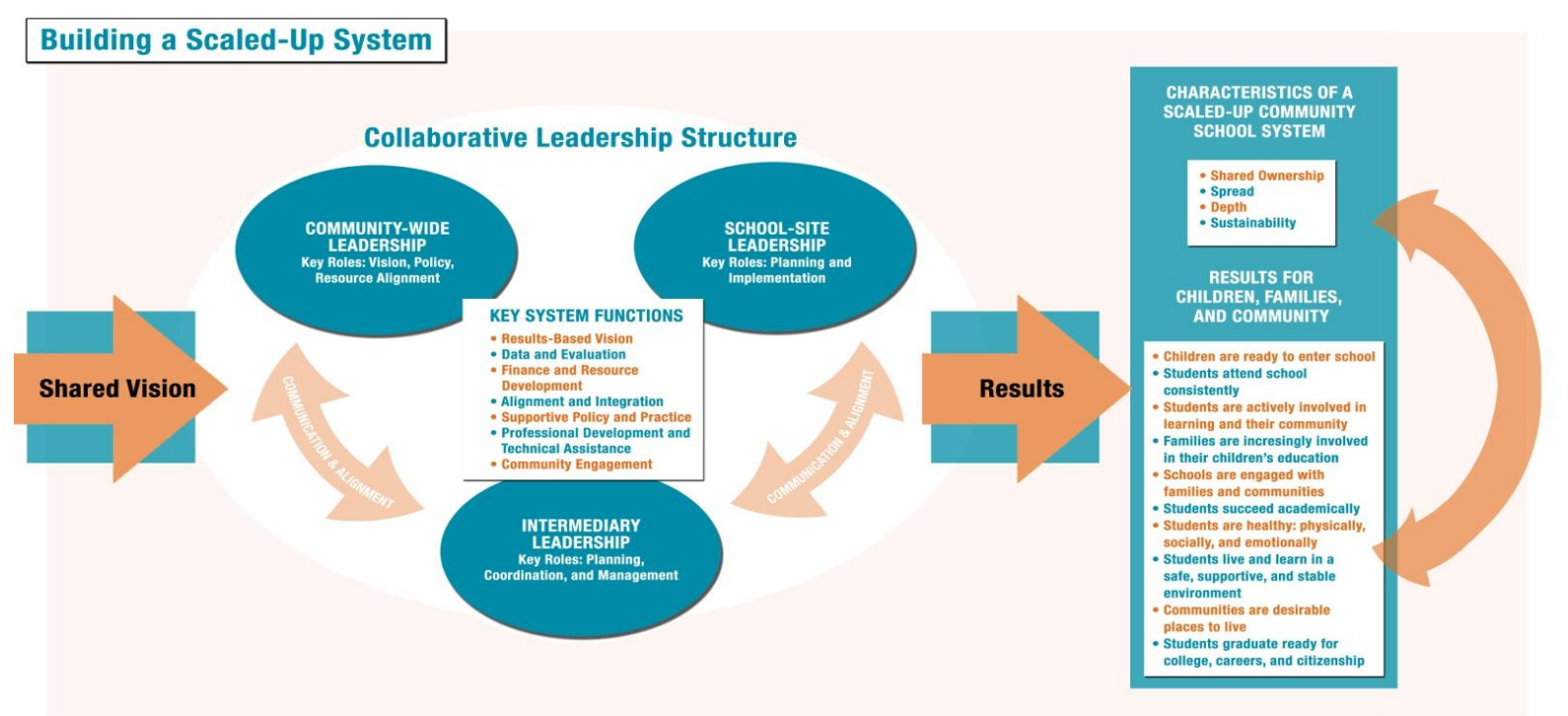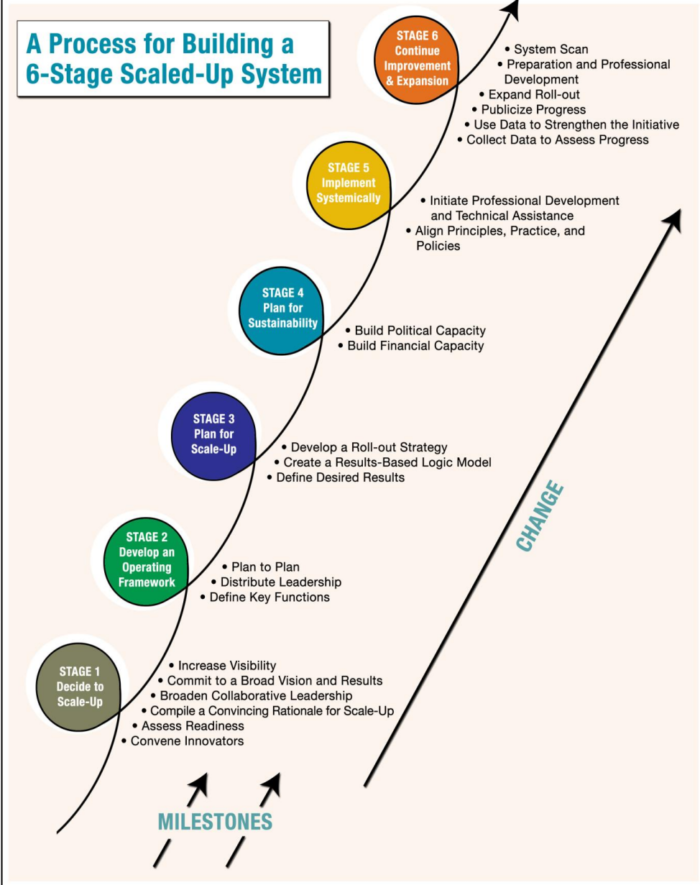Why Build a Scaled-Up System of Community Schools?
Community schools, with their emphasis on intentional partnerships, represent the most effective approach to addressing both the in-school and non-school factors that influence student achievement. The impact of poverty, changing demographics, chronic absence, health and many other factors simply cannot be ignored if students are to succeed. Of course our schools need qualified teachers and strong principals: and like all public institutions, schools must be accountable for performance. But communities must share responsibility for helping young people succeed.
Community schools are the vehicle for making this happen. They come in all shapes and sizes, yet each one is designed as a center of community—a place and a set of partnerships connecting school, family, and community. Community schools have a vision of students succeeding in school, graduating, and becoming productive parents, workers, and citizens. As they work toward this vision, community schools align school and community resources so that the essential conditions for learning are in place.

The Challenge: Growing Systems of Community Schools
There are several thousand community schools across the country and many others offer some variant of a community school strategy to better meet child and family needs—and they are making a difference in a wide range of indicators that lead to school success, including academics, attendance, and family participation. In order to wrap their arms around all their children, however, schools and communities need to expand, deepen, and sustain a scaled-up system of Community Schools.
Scaling up community schools is no pipe dream. A growing number of local initiatives are meeting the challenge and the readiness of schools and community partners to build a sustainable and coordinated system of community schools has never been greater. Scaling Up School and Community Partnerships: The Community Schools Strategy draws on the experience of these local school and community leaders. It lays out a vision-driven approach to building a scaled-up system focused on results.

What Does it Take to Build A Scaled-Up System of Community Schools?
A scaled-up system of community schools refers to a vertical network of schools from pre-kindergarten
through grade 12 in a single attendance area with all schools linked horizontally across one or more
school districts. Scaling Up School and Community Partnerships: The Community Schools Strategy
builds on both practice and research to describe the what, why, and how of system-wide expansion of
community schools. The Guide introduces a 6-stage spiraling process for moving toward a scaled-up system. Rather than providing a rigid formula or lockstep set of requirements, the Scale-Up Spiral helps school systems and communities at many different starting points begin building collaborative leadership and functional capacity—while staying focused on results. Each stage includes a set of milestones and end-state benchmarks.